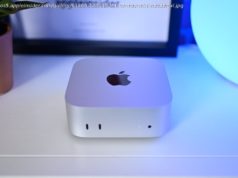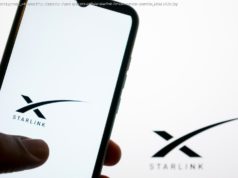Look at the Oppo Find X and tell us where the camera lenses are located. Initially, it doesn’t look like it has any, but we assure you, they are there. The Find X has a motorized camera array that rises out the top of the phone, but it’s not just for show; it stops the notch in its tracks, and enables a massive screen-to-body ratio. We’ve tried it
It’s hard not to be excited by the Oppo Find X. It has a space-age style that will turn heads, flagship specifications that’d make the Galaxy S9 Plus think twice before asking for a fight, and a spotlight feature that’s both pure Oppo, and a fun solution to current smartphone design challenges. What’s not to like? Well, the price isn’t one we’re keen on, but more on that later.
Get the Oppo Find X in your hand and you’ll want it to stay there. This is a supremely comfortable phone to hold, masterfully shaped to match the palm of your hand without spilling over due to size, or slipping out due to a glossy body. It’s still reflective, a fingerprint magnet, and shiny, but it never wanted to break free from our grip.
We’ve seen two colors — a red and a purple — but these bright hues are only accented on the main body, before coming into their own along the sides. It looks stunning.
It’s at this point you’ll notice something different about the Find X. There’s no camera on the back or the front. Has Oppo gone mad? The camera is quite often our number one reason for choosing one device over another, and getting rid of it would be like zapping phones back in time by more than a decade. No, Oppo has brought back a feature we loved the first time we saw it on the Oppo N3 in 2014 — a motorized camera array.
It’s about as flashy as phone features get. Tap the camera icon and the top of the phone silently rises out of the body, revealing a dual-lens camera on the back and a single lens over the screen. The raised camera section is about a centimeter in height, and by the time the camera app is opened and the viewfinder active, it has completed its mechanical mission. It’s not irritatingly long to wait, but it’s definitely not as fast as direct access to the camera from a home screen, such as in iOS.
We know what you’re thinking. This is a gadget waiting to go wrong. Hopefully not. Oppo’s confident on the reliability of the mechanism, and said it has been tested to 300,000 extensions, which Oppo claims is the equivalent to about five years of average use. It doesn’t wobble around, and it doesn’t poke out so far that you’ll worry about it snapping off. However, there is a gap between it and the body when extended that could let dirt and grime accumulate over time, and of course its existence means the phone is not water resistant.
However, these are the compromises one must make to have the front of the phone made up of entirely all screen — a 93.8 percent screen-to-body ratio — without the dreaded notch. Oppo has also implemented face unlock, which it has made the mistake of calling O-Face, reducing the feature to little more than a tasteless joke. It’s a shame, because O Face works rather well. We registered our face and tried it out. Wake the phone and the camera array rises before recognizing you and unlocking the phone.
Put alongside the iPhone X, the time difference is minimal and there was no need to swipe the screen to complete the action on the Find X. There’s no fingerprint sensor on the Find X, but Oppo says the 3D scanning camera is secure enough for use with payments. We couldn’t find a manual override to keep the camera extended, making it slow to use in environments where you may want to take a photo quickly. There is a shortcut on the lock screen, but O Face had usually unlocked the screen before we swiped it, slowing the process of opening the camera.
The software on the Find X we tried was still being finalized, and it’s also the Chinese version of Oppo’s Color OS user interface. The Find X will be sold in France, Spain, Italy, and the Netherlands — Oppo’s first major entry into Europe — and eventually in the U. K. and the U. S. too. When it does arrive, Google Play will be installed, along with Google Assistant, Google Lens, and an alternate version of Color OS.
Oppo is also introducing artificial intelligence features with the Find X, including scene recognition in the camera, and special portrait lighting modes. We tried this out briefly after launch and it recognized an indoor environment, and food too. It wasn’t as fast as the Huawei AI system, nor as doddering as LG’s. The AI, along with the phone itself, is driven by a Snapdragon 845 processor and 8GB of RAM, plus 256GB of internal storage. This is a seriously high-spec device.
High-end specifications, cutting-edge design, and motorized cameras also mean a high price tag. The Find X will cost 1,000 euros when it goes on sale in August, which converts over to $1,156. That’s iPhone X money, making the Find X very expensive indeed. Apple gets to charge that because it’s Apple. Oppo doesn’t have the same brand recognition yet, so the Find X — despite all its flash and ability — will be a hard sell.
A special edition phone made in collaboration with Lamborghini will be an even harder sell at 1,700 euros, or about $1,965; but it does have one supremely desirable feature — Super VOOC charging. The Find X has standard fast-charging VOOC, which is Oppo’s speedy battery charging technology. We saw Super VOOC demonstrated at MWC 2016, and this is the first time it will be used in a production phone. It charges the battery from zero to 100 percent in just 35 minutes. That’s a hugely desirable feature. The Lamborghini special edition has a textured carbon fiber body too.
The partnership was touted along the same lines as that between Porsche Design and Huawei, with Lamborghini saying the Find X was the first collaboration between the two companies. It’s not known how much input Lamborghini had in the design, and the only model of the phone we’ve seen was set behind glass, but the design looked identical.
The Find X is genuinely exciting. Whether it’s 1,000 euros worth of exciting will only become clear when we’ve spent some more time with the phone, and most importantly seen the final Euro/US version of the software.






